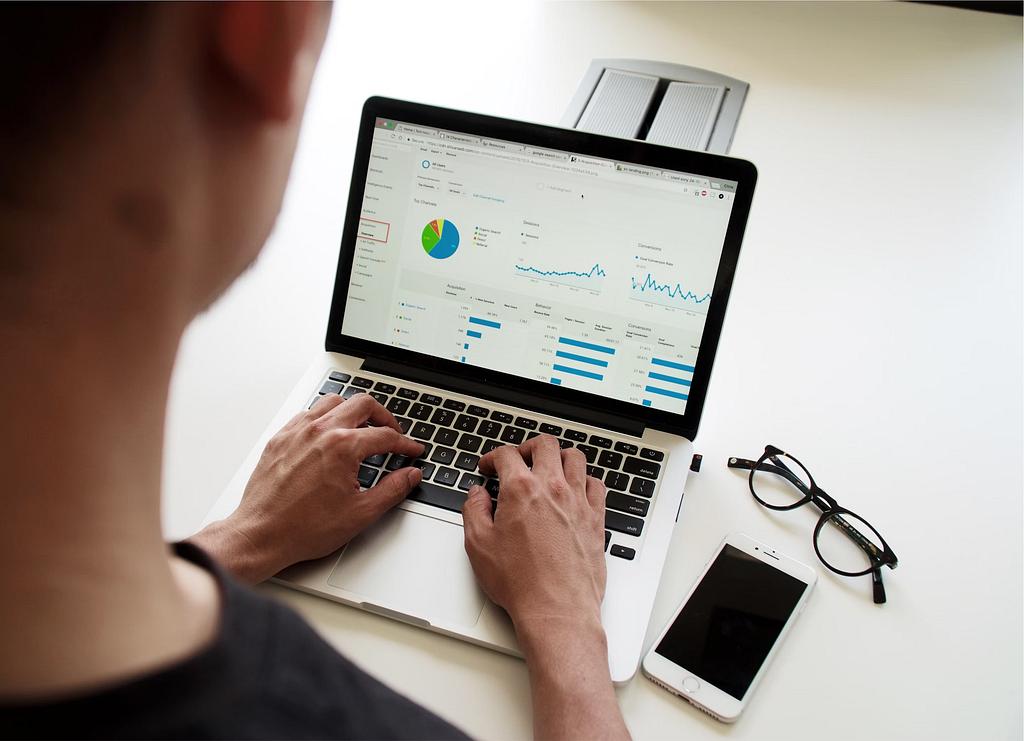The Data Analyst Every CEO Wants
Data Analyst is probably the most underrated job in the data industry

With only self-service as the last level in the analytics game, we often underestimate how much an ad-hoc analysis made by someone who understands business AND understands data can be valuable.
I got the chance to work with a few in my previous experiences. Still, it’s hard to find these unicorns.
The following lines list the top 5 things best to learn and focus on for being the analyst that every CEO should have by his side.
Become a business master
It’s often what we hear. And it’s often true.
Understanding what the business we are in is key to creating value out of the data we gather from that business.
The more we get in our brain the easier it will be to make our analysis outcomes positive.
How to learn more about the business you’re in?
- Chat with everyone. We will take a deeper sight at this one later on in this blog, but it’s a key to getting used to chatting with anyone willing to explain what he’s doing in the company and how it impacts revenue
- Go down the customer support. Look at what customers are saying, what their product usage is, and why they crumble. It’s also great, if possible, to be yourself a customer. At least to try the product.
- Look at competitors. Do your competitors have the same pricing strategy? Do they have the same team structure? What are the key differentiators between you and them?
Once you have a good concrete knowledge of the business, go down the theory highway.
What makes a B2B company a success? What are the choices to be made (for example, “quality or quantity”)? What are the different revenue strategies possible in your business? What’s ARPU? What’s LTV? What’s SAC?
Data scientists and analysts aren’t typically tasked with reporting financial metrics. Billings, MRR, EBITDA, debt-to-sales ratio, or bookings fall under the accounting and finance umbrella (thank God). We work with transactions, subscriptions, purchases, and funnel conversions, and it’s often quite a challenge to map total subscriptions to ARR or new transactions to net new revenue. It requires so much nuance and context. (1)
The theory here is often overlooked as the practical business stories you get daily thanks to stakeholders and colleagues seem enough.
It’s actually the beginning. When you learn about business theory, be it B2B or B2C, there a tons of ideas that will confront the business you’re in.
While most of the learning won’t apply to the current business, you’ll have better problem-space understanding and so a better capacity to adapt to specific cases and the evolution of the business.
Taking on this challenge will demonstrate your growing maturity and ability to manage complex situations, which will inspire confidence from your stakeholders.
A knowledgeable data analyst, even surpassing the stakeholder’s own expertise, can be a major asset for the company. Be that person.
Get a view on data-engineering
From a data analyst’s point of view, data engineering is a much more technical job.
While data analysts should be technical too, they shouldn’t go into the abyss of data engineering tasks.
Great analysts only know the good amount of the field history and key architecture concepts:
Big Data History: before getting the data, analysts’ jobs rely on upstream pipelines. These often engage with important machinery to transform and aggregate data. “Big Data” is a two decades old field and it’s important to know the abstract behind Map Reduce patterns, distributed computing, low versus high-level programming language, and cloud computing.
Architecture:
- Online Transactional Processing (OLTP): OLTP is all about the databases used by the website. By the customer-facing application. It’s designed for fast processing and CRUD operations.
- Online Analytical Processing (OLAP): OLAP is for the dashboards, for the “Business Intelligence”. It’s designed to read huge amounts of data and aggregate, filter, and nest rows. It’s the key underlying architecture data analysts rely on.
- Batch vs Streaming: batch processing is like working on a big pile of files all at once. This is the most common way of processing data when doing analytics. Reports aren’t critical to the hour, so we can build data pipelines on a weekly or monthly basis. Streaming processing is more like working on each file as it arrives, one by one. It’s great when data is critical for operation and customer-facing applications.

Learn Python, SQL, and BI As Code
There are tons of programming languages to learn. Fortunately, in the data space, two of them cover most of the practice! Python and SQL.
- SQL: data is often stored in a database, even a data warehouse (just a bigger, OLAP-oriented, database). SQL is a declarative language that allows one to query data very easily. It’s THE language to learn for every data analyst looking to do serious work.
In addition to SQL, it’s also great to learn a SQL framework such as dbt or SQLMesh. These tools allow to manage dependencies between SQL queries at scale. They are often used when several teams rely on a data warehouse to do analytics work.
- Python: in addition to being very easy to learn, Python has been the go-to language for every data scientist and engineer for decades now. It’s probably the best language to write business logic. Data wrangling is always needed and Python is fully suited for this!
These two programming languages will allow you to do any professional work as a data analyst. They are used in every company now.
Still, it’s sometimes not handy to drill down into data over many dimensions and do the analysis properly. Actually SQL isn’t designed for analytics. Python neither.
A new form of analytics is emerging to help on building maintainable and scalable analysis.
Tools like Evidence, Malloy, or Rill are on the verge of shifting the classic analytics practice toward something we can call “BI As Code”.
Mastering a tool in that space will put you in the top 1% of analysts by making your ad-hoc analysis clean, repeatable, and with deep-dive capabilities — all while saving you tons of time.
Go beyond the coffee break
Discussions with stakeholders and engineers are the most underrated activity here.
Chat with stakeholders: business decisions are often much more based on feeling rather than pixel-perfect figures. Knowing people about their data literacy and personal traits will definitely help you drive your slide deck.
Chat with engineers: data is a proxy of reality. But it’s not reality. It’s important to know what are the tradeoffs made by data engineers in the upstream pipelines and how the data as been collected. It can uncover some important bottlenecks and biases that can make your analysis completely flawed.
By chatting with everyone who has a touch on data (and anyway, anyone in the company), you will learn both about people and data. The two key components of any modern company.
It should be a proactive activity, it should be on your calendar.
When starting a new position, it’s really important to just schedule 15-minute meetings with as many people as possible. Furthermore, it will send a great message about the kind of person you are and how motivated you can be. I’ve found that these discussions can get people who’ve been caught up in internal issues or haven’t had much creative freedom to re-engage in the actual business.
Learn Storytelling & Human Cognition
Every time we interact with data, we:
- Filter the information
- Seek the meaning of it
- Act based on past experiences and corresponding biases
This is even bolder for business stakeholders who have less time to understand your analysis and less data literacy.
To improve the outcomes of data analysis, you need to understand the biases and heuristics affecting these different steps.
As mentioned in the previous paragraph, chatting is the first thing to do. It’ll allow you to make a map of everyone’s visions and issues.
The real challenge lies in presenting your data. Make it engaging! Your audience should be itching to act on your insights. That’s how your hard work becomes truly valuable.
This involves skills such as storytelling, data visualization and graphic design, and human cognition understanding.
Conclusion
Here’s your cheat sheet:
- Become a business master: Soak up everything you can about the company you work for. Chat with everyone, from customer support to executives. Understand the big picture and the nitty-gritty details.
- Speak data engineering fluently (kind of): Learn the basics of data pipelines and how data is collected. This will help you avoid misinterpreting the information you analyze.
- Master the data analysis toolkit: Python, SQL, and BI tools like Malloy are your weapons of choice. Use them to wrangle data and uncover insights.
- Become a master conversationalist: Don’t underestimate the power of a good chat. Talk to stakeholders to understand their needs and biases. Talk to engineers to understand the data’s journey. This will make your analysis more impactful.
- Learn the art of storytelling: Data is powerful, but it needs a compelling narrative to truly resonate. Hone your storytelling skills with data visualization and human psychology in mind.
By following these steps, you’ll transform from a data analyst into a strategic partner, the kind of data translator CEOs can’t wait to have on their team. Remember, data is just the beginning. It’s your ability to translate it into actionable insights that makes you truly valuable.
If you’re looking for great data resources and thinking, subscribe to my newsletter — 👀 From An Engineer Sight.
The Data Analyst Every CEO Wants was originally published in Towards Data Science on Medium, where people are continuing the conversation by highlighting and responding to this story.
from Datascience in Towards Data Science on Medium https://ift.tt/lu0qDeI
via IFTTT




